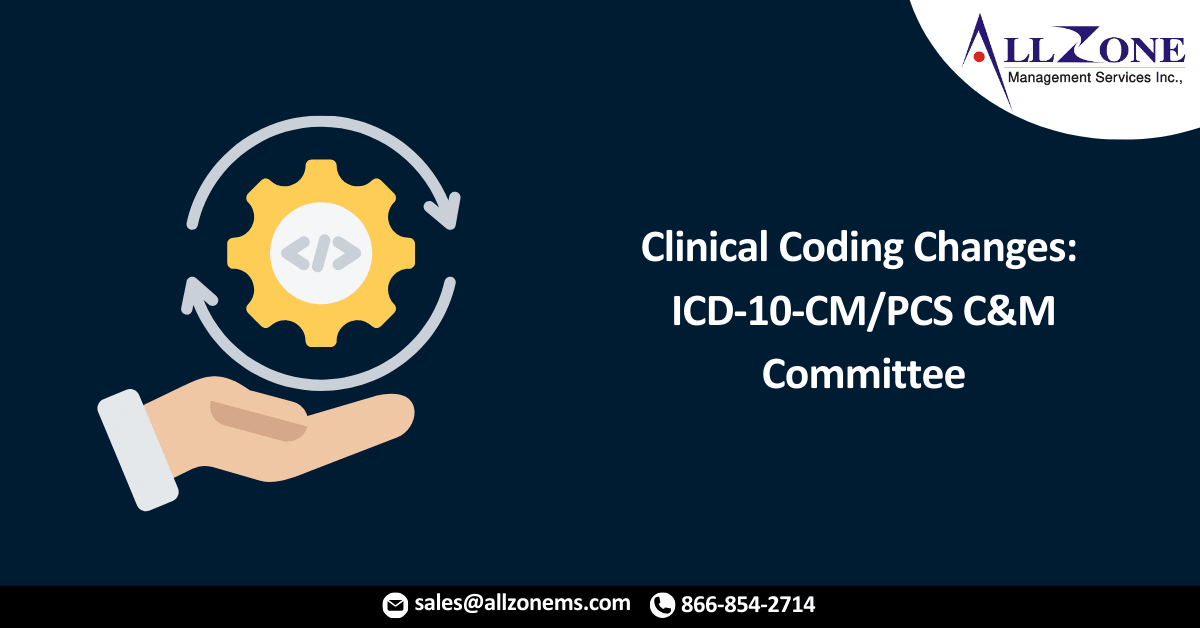Throughout the years in the health information management field, we’ve always been deeply interested in clinical coding and even find clinical coding to be fun. With that comes learning about the annual coding changes: new, revised and deleted codes. That brings us to the ICD-10-CM/PCS Coordination and Maintenance (C&M) Committee, how they work and the wealth of information they gather and disseminate.
Those annual coding changes do not just happen like magic. It takes lots of detailed information, clinical background, rationale, discussion and again discussion and then thoughtfulness before the decision is made to create a new code, revise a code, or delete one.
Some interesting topics have been the following:
Pressure-controlled Intermittent Coronary Sinus – PCS code
- Occlusion Measurement of Exhaled Nitric Oxide (FeNO) – PCS code
- Histotripsy of Liver – PCS code
- Meniscus Replacement with the NUsurface Synthetic Meniscus Implant – PCS code
- Craniosynostosis – Dx code
- Extraocular muscle entrapment – Dx code
- Insulin resistant syndrome – Dx code
- Leukodystrophies – Dx code
Per the CMS C&M website:
The ICD-10 Coordination and Maintenance Committee (C&M) is a federal interdepartmental committee comprised of representatives from the Centers for Medicare and Medicaid Services (CMS) and the Centers for Disease Control and Prevention’s (CDC) National Center for Health Statistics (NCHS).
The committee is responsible for approving coding changes, developing errata, addenda and other modifications. Requests for coding changes are submitted to the committee for discussion at either the Spring or Fall C&M meeting.
The ICD-10 Coordination and Maintenance Committee’s role is advisory. All final decisions are made by the Director of NCHS and the Administrator of CMS. Final decisions made after the fall meeting generally become effective either April 1 or Oct. 1 of the following year.
Because these meeting are a public forum, this is a call to all of us to join in on this important wealth of information. We can actively participate virtually at the live event, or we can access the agenda, materials, presentations and decision via a variety of websites. As we are all preparing for October 1, 2022, and the FY2023 changes to codes and for Inpatient Prospective Payment System ( IPPS), it’s perfect timing for a look at the prior few meeting minutes. There is a significant amount of information in the minutes and this can be incorporated into education for coding and clinical documentation integrity (CDI).
The next C&M meeting will be held on September 13-14, 2022 and will be virtual. The registration is not required to attend virtual C&M meetings.
Note that CMS will present the NTAP-related ICD-10-PCS procedure code requests that do not involve the administration of a therapeutic agent and all non-NTAP-related procedure code requests during the virtual meeting on September 13, 2022, consistent with the standard meeting process.
With a little over 1400 new ICD-10-CM codes and 331 new ICD-10-PCS codes coming for Oct. 1, 2022, now is a good time to take a look at the C&M meeting agenda, presentations, materials and minutes to gain greater insight and knowledge on the code changes.
We all love having lots of coding information!
For More Information: https://icd10monitor.com/icd-10-cm-pcs-coordination-and-maintenance-committee-a-wealth-of-information/

